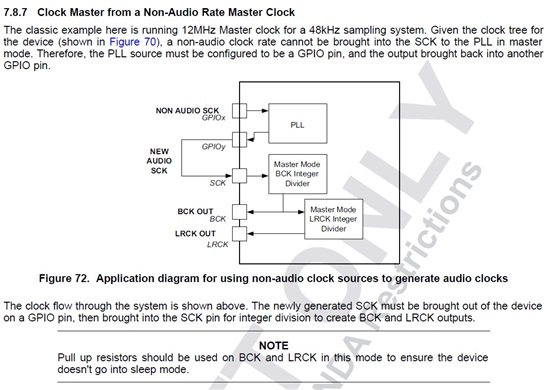In post http://e2e.ti.com/support/data_converters/audio_converters/f/64/t/267830.aspx?pi109030=1 it was mentioned that an updated version of the PCM512x datasheet was being prepared that would document how to output the PLL clock on a GPIO, among other things. This was back in May 2013 but there has been no new datasheet published yet.
I need to get the PLL output clock of the PCM5121 via a GPIO in a design, so an updated datasheet would be necessary.
What is the status of this datasheet update?


